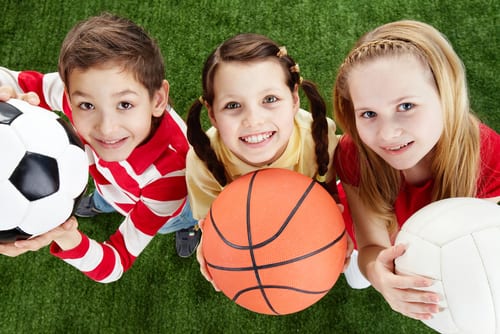
Sports specialization is commonly defined as playing one sport all year round. It’s common to see that youth participation in sports is shifting from a recreational mindset to elite-level skill development. However, do the risks for youth sports specialization outweigh the possible rewards? A growing number of parents and coaches have professional contracts in mind for their kid’s or clients’ futures. In reality, less than 1 % of youth athletes of 6 – 17 years old reach the elite levels of their sports. My goal is to educate and summarize the current evidence on the risks and benefits of intense training at early ages in one sport as well as provide guidelines to minimize the risks.
The American Academy of Pediatrics outlines the major benefits of youth sports as peer socialization, building teamwork and leadership skills, physical activity, growing self esteem, and having a good time. It is fun to play sports at a young age and it is a great way for children to develop these life long skills as well as improve their motor development when the training load is appropriate.
Across multiple research studies, various risks associated with early sports specialization have been documented:
-
Increase of overuse injuries. A recent study on 746 baseball athletes by Confino et al 2019 looked at the effects of sports specialization in professional baseball players. All participants were 1st or 2nd round MLB drafts in the span of 2008 – 2016, of which 240 were multi sports athletes in high school and 506 were single-sport athletes. The data showed that athletes who played multiple sports in high school played significantly more mean MLB games when compared to single sport athletes. They also found that single sport players had a significantly higher prevalence of upper extremity injuries, especially single sport pitchers: with almost double (33 % vs 17%) recurrence of elbow injuries compared to multi-sport pitchers. Another study by Rose et al done on 2721 high school athletes discovered that training over 16 hours a week significantly elevated the risk for injury.
-
Burnout. It usually happens over time when an athlete feels like they cannot meet the placed demands or expectations. It often coincides with a decrease in athletic performance and accomplishments. Signs of burnout can present in various forms, including constant lack of energy, decrease interest in practice, agitation, nausea, and frequent illness. By the numbers, as many as 70% of young athletes drop out of organized sports by age 13. The summary of “Sports Specialization in Young athletes” by Jayanthi et al. states that even though some degree of early sports specialization is needed to achieve elite skill development, “intense training in a single sport to the exclusion of others should be delayed until late adolescence to optimize success while minimizing injury, psychological stress, and burnout”.
-
Compromised growth/maturation. There is some evidence for later maturation of ballet dancers and gymnasts who undergo intense training during childhood, however, the evidence is not sufficient. Gymnasts and ballet dancers are often under a lot more pressure to meet not only physical but also aesthetic criteria for the sport. Parents of young female athletes competing in these sports should be aware of the signs and symptoms for female athlete triad, which encompasses menstrual dysfunction, eating disorders and decreased bone mineral density.
So what can one do to minimize the risks associated with early sports specialization?
It is recommended to play a variety of sports at an early age to decrease the chance of injuries, burnout and stress. I picked up a tennis racket at age 8 but also did track and field, karate, swimming, and soccer along my path to a developed elite tennis player. Looking back, I think all of it helped me become a better tennis player – footwork, reaction time, quickness, explosiveness, and symmetry development. American Academy of Pediatrics also recommend athletes take 1-2 days off per week and do not recommend training in a single sport for more than 8 months out of the year. There are also some common guidelines on not exceeding the hours of training per week above the current age of a young athlete (a 12 year old is advised to not be training more than 12 hours a week).
However, experts agree that is some sports, such as gymnastics, diving and figure skating, youth sports specialization is necessary, as peak skill development is often achieved before puberty. In those cases, it is advised that these athletes develop foundational motor control and strength to accept the loads placed on the body. This is also more relevant to athletes involved in sports that are asymmetrical in nature such as tennis and baseball. Foundational stability training is best achieved through an individual one on one approach to meet the specific athlete’s goals and address their unique asymmetries/muscular imbalances. Here at CHARM, our elite team of physical therapists uses movement analysis skills as well as NEURAC method to identify and target these imbalances in order to improve neuromuscular control and stability around the joints, thus decreasing the risk for injury. Let’s keep our youth athletes healthy and strong for many years to come!
Lina Padegimaite, PT, DPT



